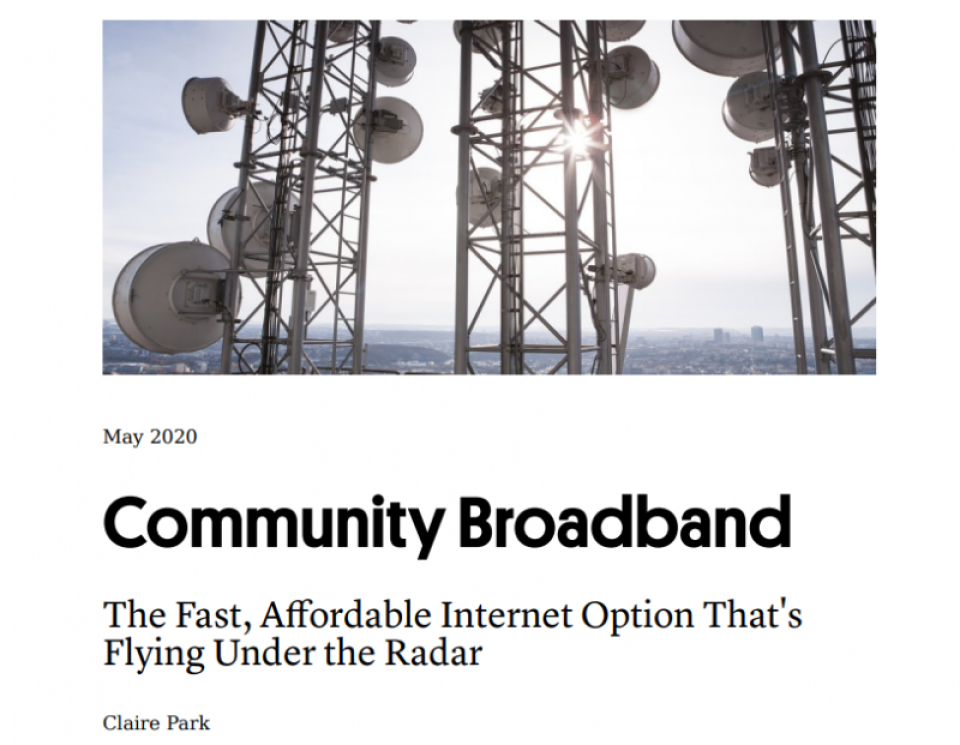
New America’s Open Technology Institute has a new report out called “Community Broadband: The Fast, Affordable Internet Option That's Flying Under the Radar.” It offers a brief look at the problem of broadband access across the United States, points out of the many benefits of the community networks which have stepped in to fill the gaps left by private Internet Service Providers (ISPs), and provides a snapshot of a few examples that have overcome legislative hurdles and monopoly ISP lobbying to bring fast, reliable Internet service to people around the country.
See a snapshot of their findings below:
- These networks create public options for broadband that can challenge incumbent private providers by delivering higher-quality and more affordable internet, and reaching more underserved communities than private providers would . . . Community broadband networks can also stimulate competition among ISPs, subsequently pushing down costs for consumers while increasing connection speeds. They can also attract new businesses to an area and improve the ability of existing firms to create more jobs and better products.
- By prioritizing the needs of the community and end users, rather than return on investment, these networks keep internet access affordable and high-quality. Such networks, by introducing competition in an area, can also increase pressure on incumbent providers to provide better services.
- Quality matters, because slow internet is not just frustrating—it can be dangerous when people are relying on internet access for telehealth and other vital services.
- Many communities also face restrictions that may superficially appear to be benign—and were promoted by incumbent carriers as necessary to achieve “fair competition” and “a level playing field”—but are in practice highly discriminatory and prohibitory.
- Ultimately, communities and local governments should be able to decide for themselves whether operating their own broadband network would be the best way to address a lack of broadband availability and to subsequently catalyze local economic development. Despite lobbying from incumbent ISPs against such efforts, as well as state legislation inhibiting the development of these infrastructure projects, communities should feel empowered to invest in their digital futures by investing in their own broadband networks.
- Policymakers should acknowledge the value of community broadband networks and support, rather than undermine, efforts to build them . . . Doing so will improve internet access and affordability, better connect people to new opportunities, strengthen local economies, and help close the digital divide.
We think it should be emphasized while some examples in the report like Fairlawn, Ohio’s FairlawnGig network and Longmont, Colorado’s NextLight network are municipally owned, YurokConnect is operated by the federally sovereign Yurok Tribe in California. While municipal networks across the United States face a combination of anti-local authority lobbying and legislative hurdles which have hindered their founding and growth, tribal communities are confronted with a unique set of obstacles.
Read the full report here or download it at OTI.

